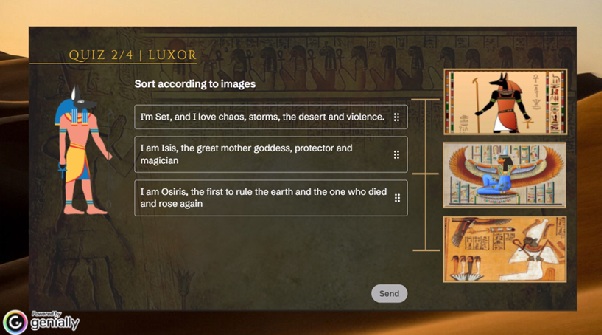Luxor is, without a doubt, one of Egypt's most impressive destinations. Known as the City of the Pharaohs, it's an open-air museum that houses some of the most iconic ruins and temples of ancient Egypt. From the moment you arrive, you feel the weight of history: the monumental temples, the tombs of the Valley of the Kings, and the avenues of sphinxes seem to transport you to another era.
During my visit, I toured both the east and west banks of the Nile, discovering temples like Luxor and Karnak, as well as the colossal funerary complexes of the pharaohs. Every stone, every hieroglyph, and every room tells ancient stories.


Table of Contents
Where is Luxor located?
Luxor is located in southern Egypt, 650 km south of Cairo, on the banks of the Nile River, in what was formerly the city of Thebes, capital of the New Kingdom of Ancient Egypt.
The city is divided into two main areas: the east bank and the west bank of the Nile. The east bank contains the temples of Luxor and Karnak, as well as the urban center and the main market. The West Bank, quieter and with a more rural atmosphere, is home to the necropolises and pharaonic tombs, such as the Valley of the Kings, the Valley of the Queens, and the Colossi of Memnon.
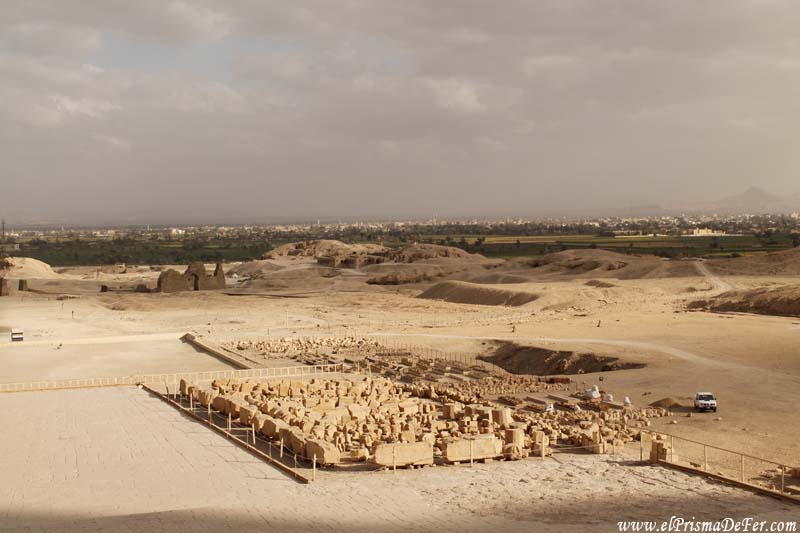
Luxor serves as an ideal base for exploring both the monumental temples and the nearby necropolises, and its location on the banks of the Nile gives it a special charm, especially at sunset when the river is tinged with shades of gold and orange.

This article is part of the 2-week itinerary traveling through Egypt independently, which in turn belongs to the trip we made also getting to know Jordan and Israel.
How to get to Luxor
Luxor es accesible por avión, tren, autobús o incluso combinando transporte fluvial a lo largo del Nilo.
Plane
The fastest option is to fly from Cairo or other major cities in Egypt. Luxor Airport is just a few minutes' drive from the city center, and there are several flights daily. This is ideal if you want to save time, although it's usually more expensive than the train.
Train
Luxor has its own train station, connecting the city with Cairo, Aswan, and other destinations. It's an economical and comfortable way to travel, allowing you to enjoy the scenery of the Nile and the Egyptian desert along the way. There are day and night trains, some with reclining seats or bunk beds for greater comfort.
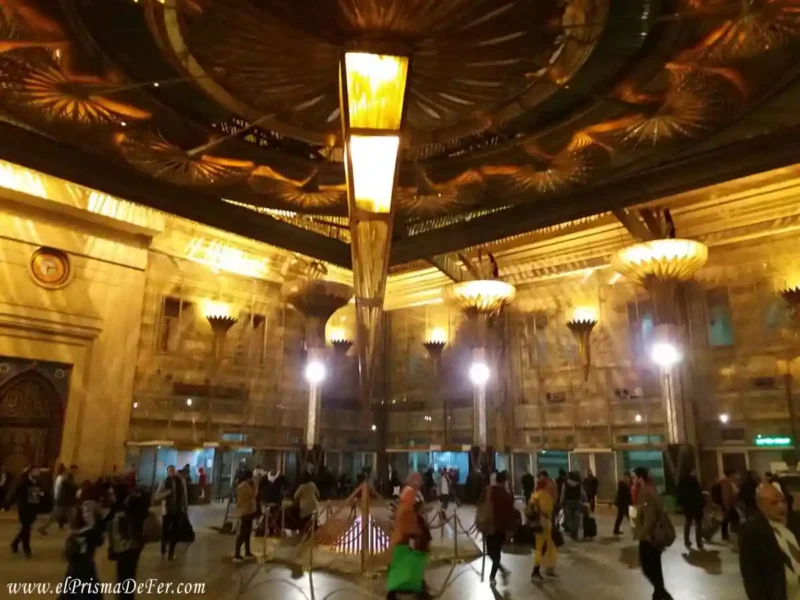
In this article I detail how to travel from Cairo to Aswan by train.
In my case, I arrived in Luxor by train from Aswan, after also traveling by train from Cairo. This route allowed me to see the changing landscapes and prepare me for exploring the city and its historic temples.
Bus or minibus
You can also get there by private bus company, such as Go Bus or Super Jet, which connect several cities, especially from Cairo and Aswan. They are cheaper than flying, but the trip can be long and tiring (approximately 11 hours). Some tourists combine them with organized excursions or group tours.
Nile boat/cruise
For those traveling from Aswan, one of the most recommended experiences is a river cruise, stopping at the most important temples along the river. This option combines transportation and accommodation, although it requires more time and budget.
What is the city of Luxor like?
Luxor has a dual character that is evident as soon as you walk through the city and its surroundings. The east bank, where most of the urban life is concentrated, is quite chaotic and bustling. Busy streets, noisy markets, and shops dotted around modern hotels and restaurants, creating an atmosphere full of movement and constant energy.
The West Bank, on the other hand, offers a much more sedate pace. It is dominated by open spaces, residential areas, and temples and necropolises that seem to have emerged directly from the past. This contrast between ancient and contemporary is felt at every turn: alongside modern buildings, temples and historic monuments stand out with their majesty, reminding visitors of Luxor's rich history.
Furthermore, Luxor is the first city to see a significant level of investment in improving urban infrastructure. Walking around the city, we saw repaired streets, improvements to the promenade along the Nile, and renovated plazas.
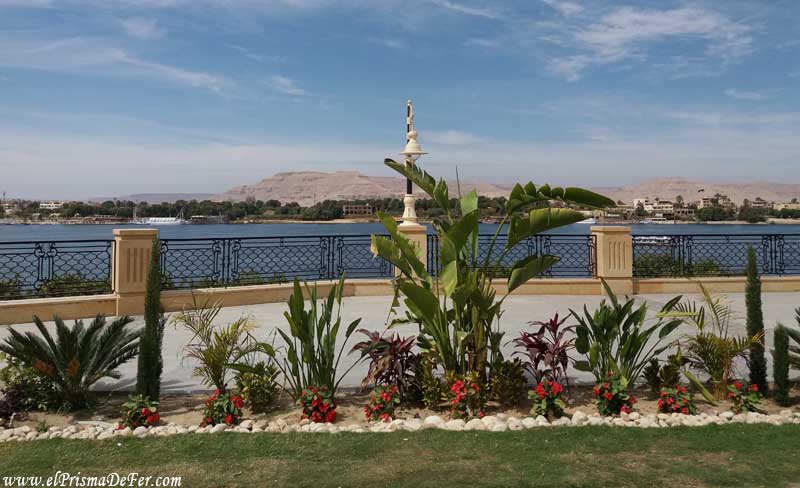
The Egyptians in Luxor
Compared to other cities in the country, I noticed that many people speak better English here and are more patient and willing to help, which makes getting around and asking questions much easier.
However, despite these advances, vendors remain very insistent, especially on the riverfront promenade, where they constantly offer tours to places like Banana Island or excursions to nearby temples.

I recommend checking out the guide to traveling through Egypt, which is ideal for planning your adventure.
How to cross the Nile in Luxor
The Nile River divides the city of Luxor in two. There are several options for traveling between the two areas.
The most practical and economical way is to take the official ferries, which are comfortable and organized, although less frequent than the private boats.
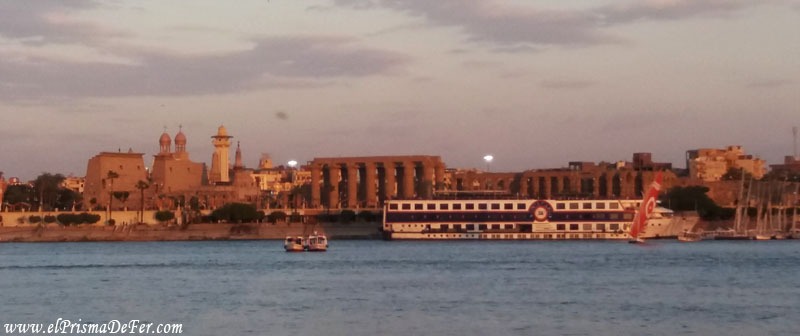
The main landing stage isin front of Luxor Temple, and on the other side you disembark near the departure points to the Valley of the Kings and surrounding areas.
Another alternative is to take one of the many local boats that cross from one shore to the other in just a few minutes. It's cheap and very frequent, as there are always boatmen offering the crossing.
You can also cross by bridge, but this involves a long detour, as it is several kilometers south of the city, and is only suitable if you are traveling by car.

Map of the most important attractions in Luxor
What to see in Luxor
In Luxor, being the ancient capital of the empire, we can find the largest number of temples, ruins, tombs and other evidence that the ancient Egyptians left in the earthly world.
Walking Tour
A free walking tour in Luxor is the best way to start getting to know the city. While it's not free, as it works based on tips, it helps you get your bearings quickly, you learn history and anecdotes from a local guide and, in the process, you can meet other travelers. You can book your free walking tour here.
What to do on the eastern side of Luxor
Explore the monumental Temple of Karnak
The Temple of Karnak was the sacred nucleus that, over the course of two thousand years, was expanded and remodeled by dozens of pharaohs, becoming one of the most impressive and rich cult complexes of Antiquity.
To date, archaeologists have catalogued more than two hundred structures within its vast precincts, each with its own history and religious function.
For centuries, this site was Egypt's most influential religious center. The main temple was dedicated to the worship of the god Amun, but as in other Egyptian temples, other deities were also worshipped.
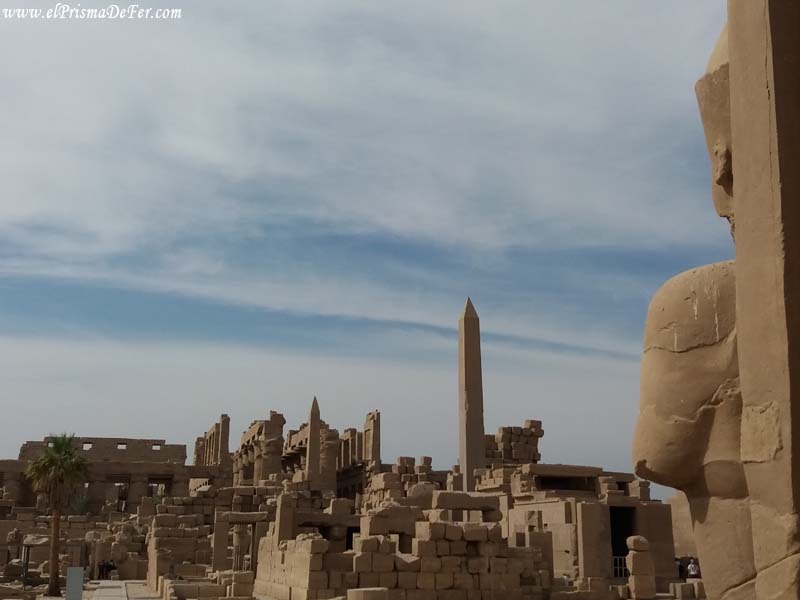
The construction of temples in ancient Egypt always began at the sanctuary, which means that Karnak was started in the center and finished at the entrances to the complex.
What is the Karnak Temple like?
The entrance to the temple, between two immense pylons, is preceded by an avenue of ram-headed sphinxes, symbols of the god Amun.
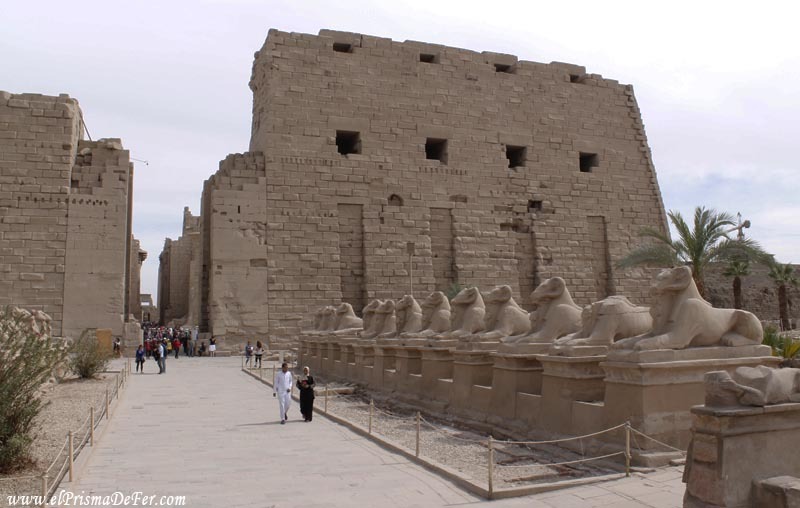
You enter a large courtyard where you find, on the left, a small temple of Pharaoh Seti II, one of the columns of Taharqo and the monumental statue of Pinedyem I; on the right, the temple of Ramses III; in front, the hypostyle hall, and a little further back, the obelisks of Thutmose I and Hatshepsut; then there are a series of rooms, with smaller courtyards, and the sanctuary, which only the Pharaoh and the priests had access to.
The hypostyle hall of Karnak is one of the most unique parts of the religious complex. Standing 23 meters tall, it is an architectural space whose roof is supported by 134 gigantic columns, the highest in the two central rows, forming a large corridor whose layout allows light to flow from the center of the hall.
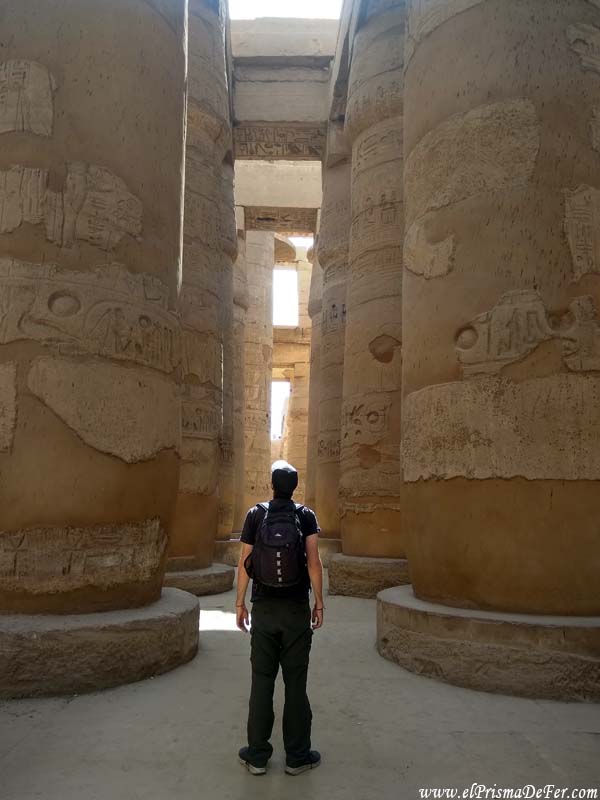
After the pyramids of Giza, the Temple of Karnak is the second most visited site in Egypt.
The entry fee for 2025 is:
- Adults: EGP 600
- Students: EGP 300
In any case, I recommend always checking the latest ticket prices on the official website.
To take into account
Something strange happened to us here. The temple is so large that several times we found ourselves practically alone inside. And on two occasions, armed "guards" approached us, offering to show us corners not accessible to everyone.
At first, we were confident because we were inside the temple...what could happen? But as they led us further and further away, insisting that the place we were going to would offer unique views of the complex, we grew increasingly suspicious, so we gave up on both occasions.
I don't know if it was to ask you for a tip later, or if they led you with another intention. Just in case, my advice is: don't follow them.
Visit the Temple of Luxor
Another of the most visited places in Luxor is the Luxor Temple, located in the center of the city.
The temple is accessed via an avenue of human-headed sphinxes, which connects it to the Karnak complex about 3 km away. When I was there, this route was under reconstruction.
It was built primarily during the reigns of Amenhotep III and Ramses II. Other kings, such as Tutankhamun, Horemheb, and Alexander the Great, also added decoration or minor structures to this gem-like temple.
The entrance pylon, built and decorated by Ramses II, was once adorned with two obelisks and six colossal royal statues. However, if you look closely, you'll notice that there is actually only one of the obelisks at the entrance.
That's because in 1830, Egypt decided to give France one of its obelisks as a sign of goodwill and political alliance.
Although this temple isn't as large as Karnak, it's unique in that it can be visited even at night. I highly recommend it, as it's well lit and offers a different perspective of the site.
The entrance has a cost of:
- Adults: EGP 500
- Students: EGP 250
You can check the latest ticket prices from the official website.
Tour the Luxor Market
The Luxor market, also known as the souk, is a vibrant place where much of the local life is concentrated. Among its narrow streets, you'll find everything from intensely colored spices and irresistible aromas to clothing, handicrafts, perfumes, and souvenirs of all kinds.
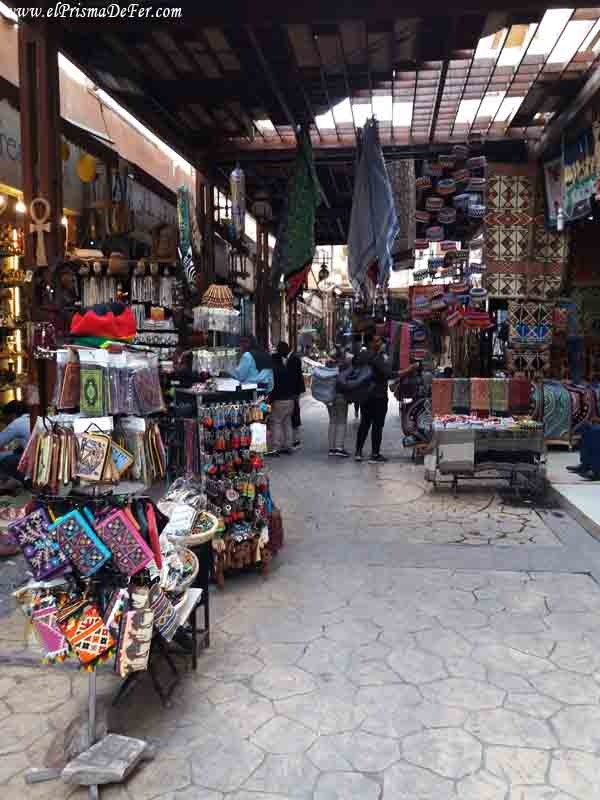
The atmosphere is chaotic, filled with salespeople trying to get your attention, so it's normal to be constantly called out to offer products.
Enter the Mummification Museum
The Mummification Museum offers a look at the mummification process in Ancient Egypt. It explains in detail how this rite was performed, accompanied by artifacts used in each stage.
In addition, curious pieces related to funerary practices and even animal mummies are on display, demonstrating how widespread this tradition was in Egyptian life.
What to do on the west side of Luxor
On the West Bank of Luxor are the largest concentration of tombs and temples from the ancient Egyptian Empire, places steeped in history that attract tourists from all over the world.
It is generally advisable to book guided tours to visit these sites, since although the distances between them are not great, a guide helps you make the most of your time and learn the historical details. One day is usually enough to visit most of the main temples and necropolises in the area.
In my case, I decided to bike the tour on my own. Although it's several kilometers long, cycling allows for quick and flexible travel, as well as the possibility of stopping at each location as long as we like.
In one day, I was able to visit the Colossi of Memnon, then the Temple of Habu, Deir El Medina (Tomb of the Craftsmen), the Valley of the Kings, the Temple of Hatshepsup and finally, just before closing time, the Temple of Ramesseum.
I admit that I didn't have enough time to see some temples more leisurely, but I pedaled so much that I didn't have the strength to return the next day.
Purchase tickets for the tombs and necropolises of the West Bank of Luxor
Tickets to visit the various tombs and temples on the West Bank are purchased at a central ticket office, located at this point on the map.
It's important to know that you should decide on all the places you plan to visit, as each ticket is only valid for the same day and cannot be purchased directly at the temple gates.
Colossi of Memnon
The first stop of the day is inevitably the Colossi of Memnon.
The Colossi of Memnon They are two gigantic stone statues representing Pharaoh Amenhotep III, who ruled during the 18th Dynasty of Egypt.
They are located on the main route, which then leads to the ticket office where you can buy tickets. It's a must-see, and luckily, you don't have to pay an entrance fee to see them.
Habu Temple
Habu was a city that for centuries served as the administrative and economic center of the region, as well as being one of the first places associated with the god Amun.
Due to its size and its architectural and artistic importance, the temple is known for its reliefs illustrating the rise and fall of the Sea Peoples during the reign of Ramses III.
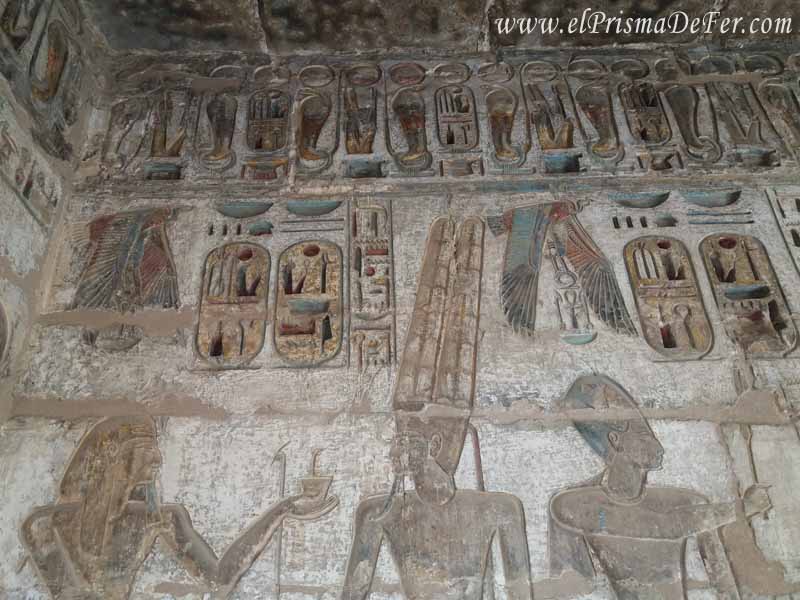
Furthermore, within the city, you can find the funerary temple of Ramses III.
Deir El-Medina
Deir el-Medina It is an Egyptian settlement founded by Thutmose I, Pharaoh of the 18th Dynasty. Here you can find the remains of what was once the most prosperous settlement of workers and artisans in Ancient Egypt..
For a long time, it suffered from looting of antiquities, as it was a site well known for the abundance, beauty, and wealth of objects found nearby.
However, there is still a wealth of archaeological evidence, including tombs, dwellings, and grave goods, making this site one of the best studied and understood settlements of Ancient Egypt.
The ticket allows you to visit two or three tombs belonging to some of the most renowned artisans of that era. Once inside, you'll see corridors and rooms whose walls are fully decorated with colorful hieroglyphics in very good condition.
The entrance has a cost of:
- Adults: EGP 220
- Students: EGP 110
You can check the latest ticket prices from the official website.
Valley of the Kings
The Valley of the Kings is a necropolis in ancient Egypt, where the tombs of most of the pharaohs of the New Kingdom are located, as well as Queen Hatshepsut and some animals. It is one of the essential visits on any trip to Egypt.
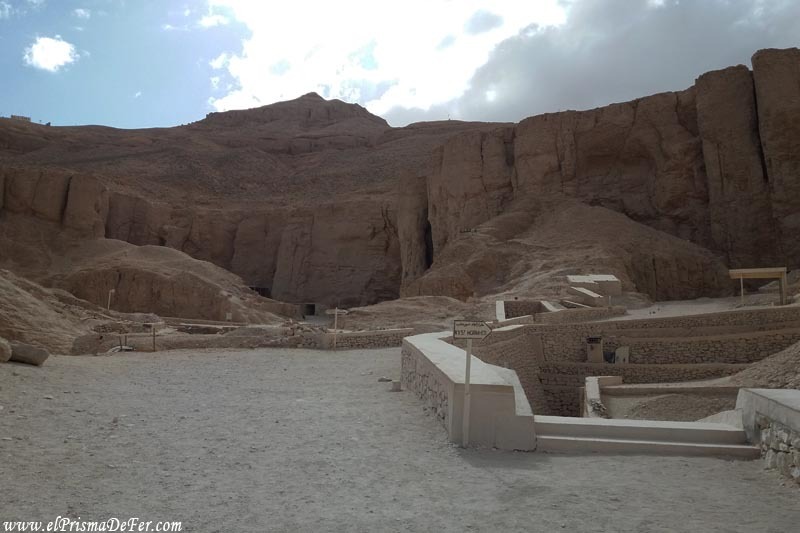
It is said that they decided to locate this necropolis far from the city, hidden in the valley, to avoid tomb raiders. While it served its purpose at first, unfortunately, over the years, they were discovered, and many of the tombs were looted.
That's why the discovery of Tutankhamun's tomb in 1922 was so important at the time. Because all the treasures left to the pharaoh posthumously were still preserved inside.
The visit consists of choosing a maximum of three tombs designated for this purpose on that particular day. This list changes daily, likely for maintenance and conservation work on each tomb.
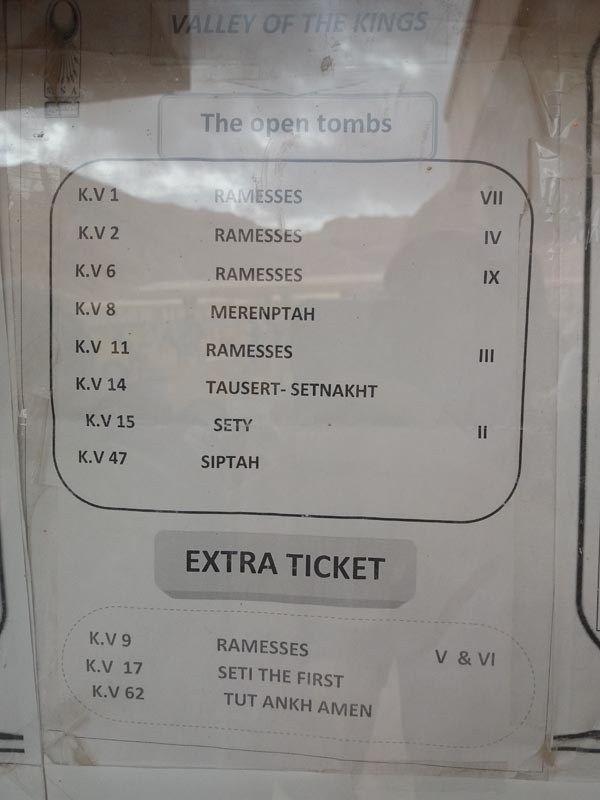
Reaching the Valley of the Kings by bike was the hardest part of the day. The route to the Valley is slightly uphill, and when you add the headwind, the heat, and the miles already covered, wow, it was tough.
Which tombs are best to visit in the Valley of the Kings in Luxor?
That answer really depends on each person. I've read several blogs where everyone shares their own opinions, based on what they've been able to visit.
I personally chose to visit the tombs of Ramses IV, Tausert-Setnakht and that of SETY II.
Of those three, Ramses IV's seemed the most striking and largest to me. The paintings on the walls were the best preserved.
The other two tombs looked older, with hieroglyphics and paintings that were already faded and somewhat blurred. The best thing about visiting them is that they don't usually receive many tourists, so I found myself exploring them completely alone.
I can assure you that being there, in absolute silence and solitude, made my mind travel back thousands of years, connecting with history in a very intense way.
Generally, most tourists concentrate on the various tombs of the Ramses, which, in addition to being the best preserved, are closest to the entrance. But if you enter some of the tombs at the end of the valley, you may find yourself completely alone.
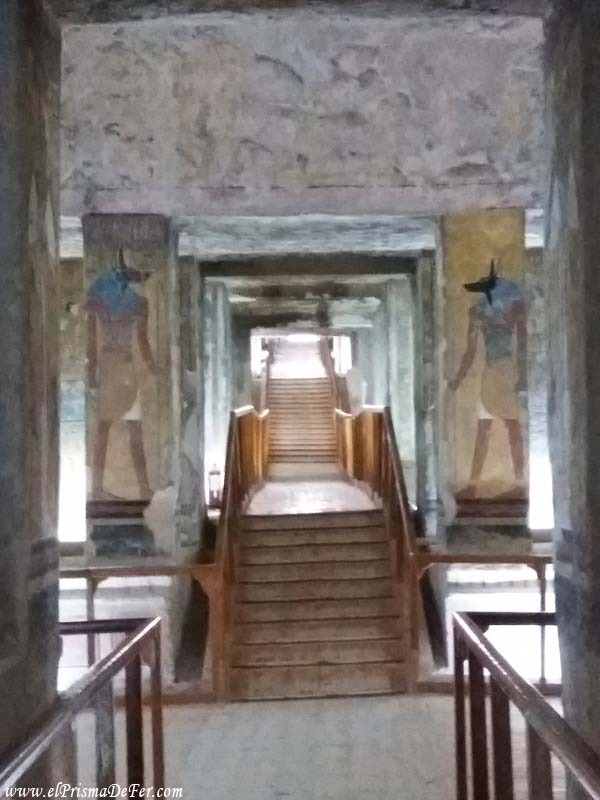
Entrance to the Valley of the Kings in 2025 costs:
- Adults: EGP 750
- Students: EGP 375
You can check the latest ticket prices from the official website.
How to visit Tutankhamun's tomb
The tomb of Tutankhamun (KV62) is undoubtedly the most famous in the Valley of the Kings, although not the most impressive in terms of size or decoration. It became famous because it was discovered practically intact in 1922 by the British archaeologist Howard Carter, with an immense treasure that is now largely on display in the Egyptian Museum in Cairo.
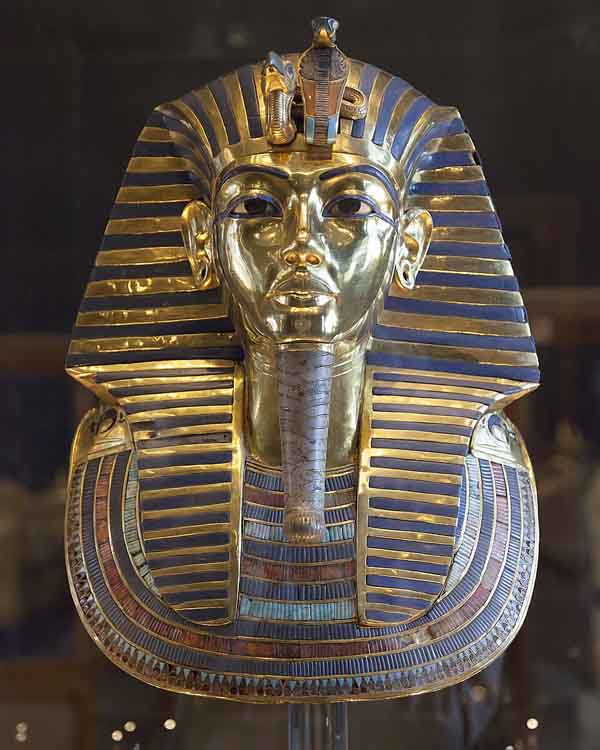
Unlike other tombs, the interior of Tutankhamun's tomb is quite modest and small, with few murals and simple decoration. However, the main attraction is that the original mummy of the pharaoh is located there, displayed inside a climate-controlled glass case.
To access the tomb, you must pay an additional entrance fee in addition to the general Valley of the Kings ticket. The price is usually higher than for other tombs.
The tour inside the tomb is quick (no more than 10 minutes) due to its small space and the number of tourists constantly entering and leaving.
Temple of Hatersputh
The Temple of Hatshepsut, also known as Deir el-Bahari, is one of the most impressive temples on the West Bank of Luxor.
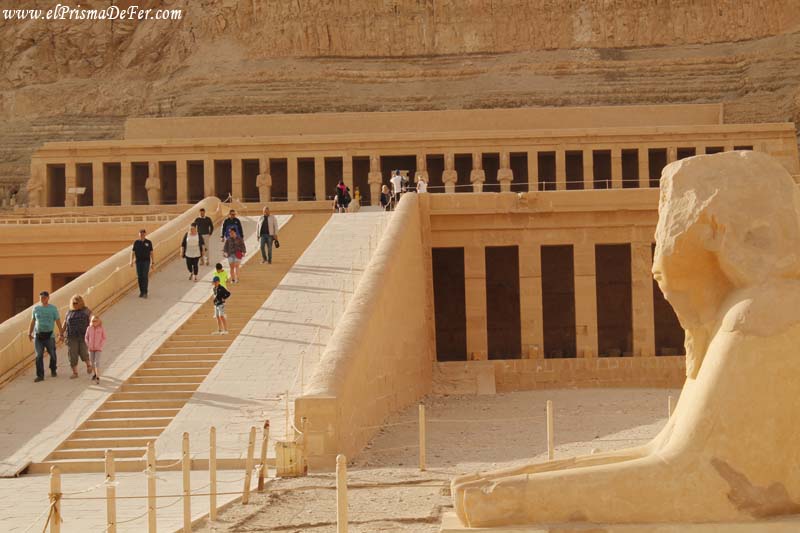
It was commissioned by Queen Pharaoh Hatshepsut, one of the few women to rule Egypt as pharaoh, in the 15th century BC. Its monumental design, embedded in the side of a limestone mountain, makes it one of the masterpieces of Egyptian architecture.
The temple is composed of several stepped terraces connected by ramps, with columns and porticos that seem to merge with the desert landscape. Its walls still contain reliefs and paintings depicting episodes from Hatshepsut's life, such as her legendary trading expedition to the land of Punt and her proclamation as pharaoh.
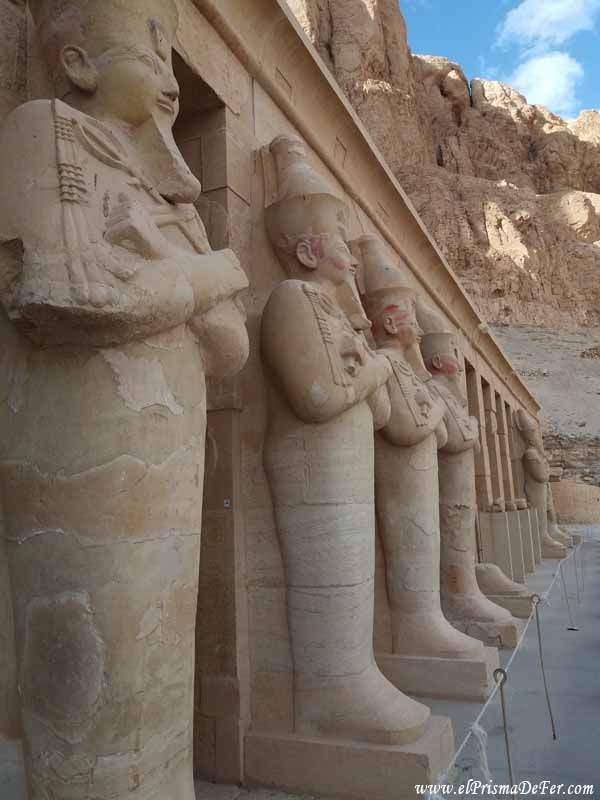
Beyond its historical and architectural significance, the site has a very special aura: the contrast between the arid desert, the vertical cliffs, and the monumentality of the temple makes for a stunning postcard. It's no coincidence that it's considered one of the most beautiful temples of Ancient Egypt.
Although the statues and other ornamental details were stolen or destroyed over the years, in its time the temple housed statues of Osiris, sphinxes, and numerous sculptures of Hatshepsut in various positions: standing, sitting, and kneeling.
The visit is usually included in any excursion to the Valley of the Kings, since it is very close.
Sadly, this place is also remembered for an attack that happened many years ago. In 1997, this temple was the epicenter of the Luxor massacre, in which 62 people, mostly tourists, were killed by Islamic extremists. A time unlike today, when attacks occurred more frequently.
Entrance to the Temple of Hatersputh in 2025 costs:
- Adults: EGP 440
- Students: EGP 220
You can check the latest ticket prices from the official website.
Templo Ramesseum II
The Ramesseum is the funerary temple built by Pharaoh Ramesses II, one of the most powerful and remembered rulers of Ancient Egypt. It is located not far from the Temple of Hatersputh and the Valley of the Kings, and although much of it is in ruins today, its grandeur can still be appreciated.
The complex was dedicated to the god Amun and to Ramses II himself, with the aim of worshipping the pharaoh even after his death.
The most striking feature is the Colossus of Ramses II, a gigantic granite statue that originally measured more than 18 meters in height. Although it now lies collapsed on the ground, it remains impressive and gives an idea of the pharaoh's power and ambition.
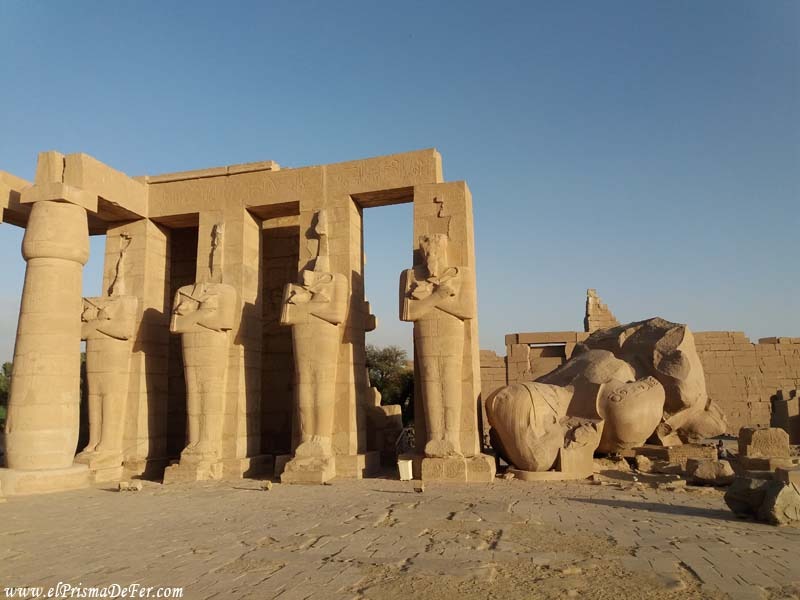
The temple still preserves reliefs that narrate the military victories of Ramses II, especially the famous Battle of Kadesh, where the pharaoh is depicted as an invincible warrior. These engravings, in addition to their artistic value, were a form of political propaganda that sought to elevate his image.
Unlike other temples in Luxor, the Ramesseum tends to receive fewer tourists, allowing for a more leisurely and peaceful tour. This atmosphere, combined with the desert landscape and the still-standing columns, makes it an ideal visit for those looking to get off the beaten track.
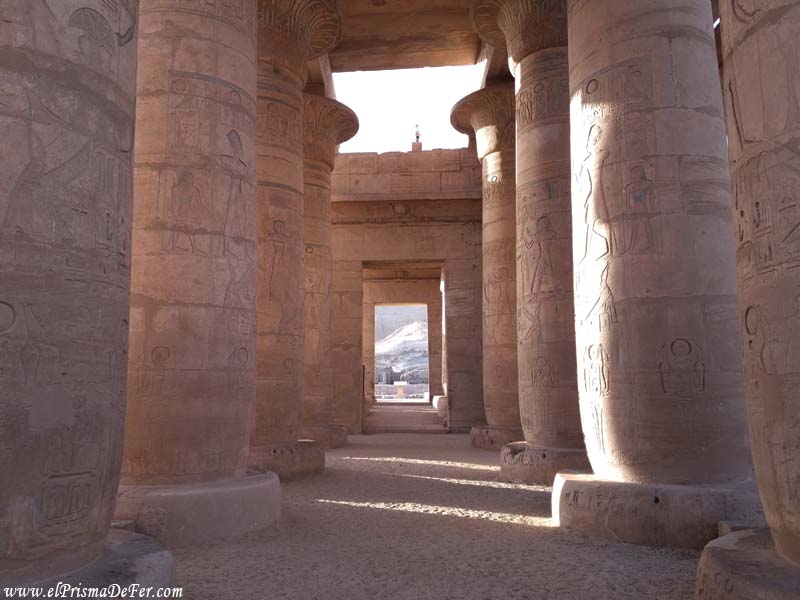
Entrance to Ramesseum II Temple in 2025 costs:
- Adults: EGP 220
- Students: EGP 110
You can check the latest ticket prices from the official website.
End of the day
After pedaling more than 25 km, I concluded my tour of Luxor's West Bank. I needed a little more time at some temples, like the Ramesseum, where I only spent a few minutes before closing time, but it was still one of the most intense and rewarding days of the trip.
The physical effort was totally worth it: I was able to contemplate some of the most impressive structures left behind by the ancient Egyptians. The experience reminded me of cycling through the temples of Angkor Wat in Cambodia, with that same feeling of absolute happiness in two such different, yet equally magical, places.
Balloon rides in Luxor
One of Luxor's most popular attractions is a hot-air balloon ride over the city at dawn. This experience allows you to see the temples, the green fields along the Nile, and, above all, the contrast with the desert and mountains that hide the Valley of the Kings from above.
Flights usually start very early, before dawn. The operators pick you up from your accommodation, take you across to the western side, and from there the balloons depart. The ride lasts between 45 minutes and an hour, depending on the weather, and you usually share the basket with other travelers.
As for prices, there is a wide range depending on the company and the season, but they usually range between 50 and 80 USD per person. It's recommended to book in advance, as this is a highly popular activity. It's also worth keeping in mind that flights are highly dependent on the weather: if there's strong winds or fog, they may be cancelled.
If you've ever been to Cappadocia and flown in a hot air balloon, the experience in Luxor has some similarities. Although in Turkey the main attraction is the rock formations and fairytale landscapes, here the real attraction is flying over the temples, the green fields along the Nile, and the mountains that hide pharaonic tombs.

Things to do in Cappadocia (coming soon)
Private tours in Luxor
The tours I recommend below contain affiliate links. This means that if you book through them, I receive a small commission at no extra cost to you. It's a way to support my work and help me keep this space alive, filled with stories and travel advice. Thanks for joining me along the way ;)!
Where to stay in Luxor
On the eastern side of the Nile River is the city center, with large hotels and a wider range of restaurants. Also on that side, we can find The Temples of Luxor, the Temple of Karnak and the Mummification Museum among the most interesting points.
On the west side of the river, however, things are much quieter. And while there's also plenty of accommodation here, it's not as busy and noisy as on the other side (except for the "Banana Island" excursions, which are a bit tiring).
Even on the western side is where we will find the largest number of historical sites to visit. Just to name a few, we can see The 2 Colossi of Memnon, the Temple of Hatersputh, the Valley of the Kings, Deir El Medina and several more.
Nosotros decidimos alojarnos en la costa occidental, en uno de los modernos Villa Dream apartmentsWe chose tranquility above all else. It had good prices, a great location, and a nice terrace to relax in. The owner also has a restaurant a few blocks away and offers tours, but his prices didn't seem that affordable to us.
To cross from one side to the other, you can use the public ferry or any of the barges that offer crossings. They depart constantly and the prices are very affordable.
How to get from Luxor to Dahab
It was a big dilemma to decide how to get from Luxor to Dahab. If you look at Dahab on the map, you'll see that it's far from Luxor.
From what I found out, there are 3 ways to get to Dahab from Luxor:
Fly to Dahab
The fastest way to get to Dahab from Luxor is undoubtedly by plane. From Luxor Airport, Egypt Air operates flights to Sharm-el-Sheikh Airport. The flight, if direct, takes less than an hour, and the car ride will take another hour. This is the fastest and most comfortable option, and may not be as expensive.
Go to Dahab from Luxor, passing through Hurghada and then by boat
A mid-range option in terms of time and cost may be to take land transport to Hurghada and from there take one of the boats that connect this city with Sharm el-Sheikh.
I'm not sure if this option is still in place, as I don't know if the ships always depart or if they depend on other factors.
Go to Dahab via Cairo and then by bus
The cheapest option, but a very long one, is to return to Cairo by train or bus, and from there take a bus with the company Go Bus towards Dahab.
This route would involve a 12-hour train ride to Cairo and then another 12/14 hours by bus to Dahab.

Saying goodbye to Luxor
Leaving Luxor wasn't simply saying goodbye to the city. Taking the plane to Dahab, for the Mount Sinai and Dead Sea region, meant leaving behind the area where the Egyptian civilization had settled to build its empire. We would no longer see the pyramids, tombs, and colossal temples of this great civilization.
We spent several days traveling from one place to another, learning as much as we could about Egyptian culture. We certainly missed several places to discover, but I have no doubt we were able to witness the most important buildings here.
With great satisfaction we said goodbye to Luxor, and took the plane that would take us to the Dead Sea, to the city of Dahab.
Various videos of our visit to Luxor
Support The Prism of Fer!
Your support helps me continue creating free content on the blog. Thank you so much!











